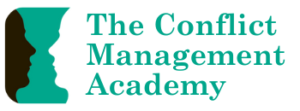This is an incredibly powerful book, in both form and substance. I found it incredibly moving, often challenging, and sometimes very confronting. While the book is primarily situated in the USA, the stories and the messages translate into other countries such as Australia where racism, cultural dominance, and institutional oppression are equally problematic. The book’s goal is to highlight these issues in conventional approaches to mediation, arbitration, and alternative dispute resolution”, and to “examine and interrogate these structures, interactions, and practices to suggest directions for change”.
The book contains three parts: hindsight, insight and foresight. In each of those parts there are contributions from a range of people with diverse backgrounds and experiences, and their contributions include chapters written in a formal academic manner, transcripts of conversations, poetry and personal storytelling. It’s hard to do justice to such a complex and significant book in a simple review. Instead of trying to do so, here are some parts of the book and quotes from various contributors that had a profound impact on me.
I found much to reflect upon in Beth Roy’s chapter on how mediation practices perform racism. She describes the power inequities embedded in academic credentialling and other barriers to entry into the conflict resolution field. She explains that these barriers are not just because means of entry to the field are less than accessible to applicants from nondominant communities, but also because the practices themselves fit badly with those cultures. She states:
“People of color and people from cultures beyond northern Europe often find the structure – time limitations, office settings, conversational turn-taking, controlled modes of emotional expression, leadership that hides its opinions – incompatible enough with their cultural norms that just walking in the door is silencing. Trusting that the mediator who sets these conditions is neutral is a stretch.”
Beth Roy also points out the contradictions between providing services that increasingly eclipse the wisdom of grassroots mediators, creating a commensurate need to pay for something that belongs to us all but is available only to those with means to pay, is a social problem rarely addressed as we debate best practices.
Hasshan Batts agrees, explaining that :
“Every community possesses heroes and messengers without titles or credentials that routinely bring parties together, create brave spaces, actively listen, support those involved to feeling heard and to contribute to generating solutions that prevent, respond to, or mitigate acts of violence and harm. The academy and the conflict resolution field continue to ignore the voices, lived experiences, approaches, and techniques of the conflict revolutionists across our communities…”
Batts criticises the way in which the world of conflict resolution has limited racialized communities’ access to voice by commodifying healing, professionalizing problem-solving, and hyper-theorizing the work of restoring relationships and resolving conflict. This also leads to a dependency on external professionals and systems rather than the indigenous and community practices that have maintained communities for generations.
Beth Roy notes that as mediation becomes a paid service, its vocabulary and processes are legitimized by borrowing from other established professions, primarily the law. John Paul Lederach comments that “Professionalization, which is important, moves in a direction where the heart and spirit actually doesn’t come along with it always.”
I was struck by the suggestion that facing up to institutionalized racism may be a particular challenge to those who work in the field of conflict resolution, because we tend to think of ourselves as practitioners who are fair and promote peace. I also found enlightening Roberto Chené’s statement that choosing to be nonracist is, by definition, choosing to increase conflict. He explains that this conflict is necessary as feedback that guides us in our next step towards actual transformation.
For me, the book certainly met the editors’ aim, requiring me to “reach beyond that which is familiar and comfortable”. This book is essential reading for everyone in the conflict resolution field.

